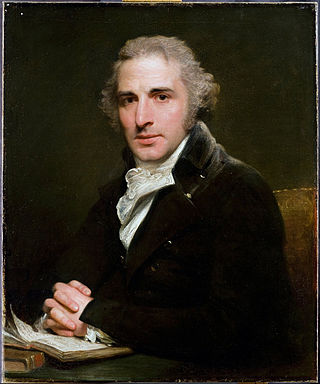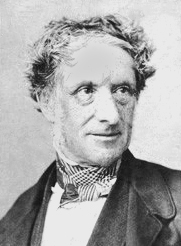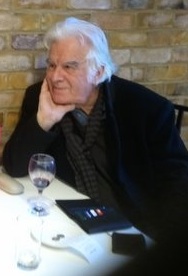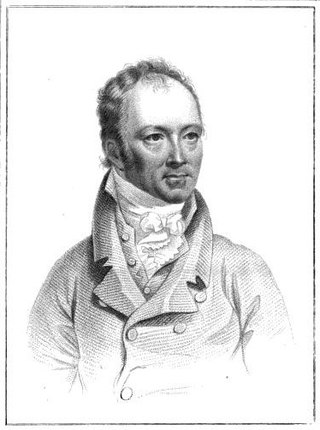
Charles Molloy Westmacott (c. 1788 - 1868) was a British journalist and author, editor of The Age , the leading Sunday newspaper of the early 1830s. He sometimes wrote under the pseudonym Bernard Blackmantle.

Charles Molloy Westmacott (c. 1788 - 1868) was a British journalist and author, editor of The Age , the leading Sunday newspaper of the early 1830s. He sometimes wrote under the pseudonym Bernard Blackmantle.
Born in 1787 or 1788, Westmacott claimed to be the illegitimate son of the sculptor Richard Westmacott (the elder), although his political enemies claimed he was the son of a chimney sweep from Drury Lane. His mother was Susan Molloy, a husbandless widow, who ran a tavern "The Bull and Horns" in Fulham, London. [1]
He was educated at St Paul's School and Oxford University then went to study sculpture at the Royal Academy. In 1827 he became editor of The Age, a Sunday newspaper which had started in 1825 and which specialized in scurrilous and satirical gossip about celebrities of the day. [2]
Westmacott was savagely portrayed as the unprincipled gossip-monger 'Sneak' in Edward Bulwer's England and the English, and has been dubbed "the principal blackmailing editor of his day". [3] While he did accept money to suppress publication of stories, this was legal until the 1843 Libel Act, and a recent treatment has argued that these practices were "incidental rather than central to the Age." [2]
His best known book was "The English Spy". Because of his connections to the art world the book was illustrated by top artists of the day: Robert Cruikshank and Thomas Rowlandson. [4] He was also the editor of the journal "Records of the Fine Arts".
He exhibited at least one work at the Royal Academy, London: a bust of John Philip Kemble (1822).
In the 1840s Westmacott moved to Paris, where he died in 1868. [1]
A portrait of Westmacott by Daniel Maclise is held by the National Portrait Gallery, London. [5]
Charles Knight was an English publisher, editor and author. He published and contributed to works such as The Penny Magazine, The Penny Cyclopaedia, and The English Cyclopaedia, and established the Local Government Chronicle.
Events in the year 1809 in Art.

John Philip Kemble was a British actor. He was born into a theatrical family as the eldest son of Roger Kemble, actor-manager of a touring troupe. His elder sister Sarah Siddons achieved fame with him on the stage of the Theatre Royal, Drury Lane. His other siblings, Charles Kemble, Stephen Kemble, Ann Hatton, and Elizabeth Whitlock, also enjoyed success on the stage.

Sir Edwin Henry Landseer was an English painter and sculptor, well known for his paintings of animals – particularly horses, dogs, and stags. However, his best-known works are the lion sculptures at the base of Nelson's Column in Trafalgar Square.

Charles Edward Conder was an English-born painter, lithographer and designer. He emigrated to Australia and was a key figure in the Heidelberg School, arguably the beginning of a distinctively Australian tradition in Western art.

Edward Verrall Lucas, CH was an English humorist, essayist, playwright, biographer, publisher, poet, novelist, short story writer and editor.

Sir Richard Westmacott was a British sculptor.
Events from the year 1856 in art.

Sir Leslie Matthew Ward was a British portrait artist and caricaturist who over four decades painted 1,325 portraits which were regularly published by Vanity Fair, under the pseudonyms "Spy" and "Drawl". The portraits were produced as watercolours and turned into chromolithographs for publication in the magazine. These were then usually reproduced on better paper and sold as prints. Such was his influence in the genre that all Vanity Fair caricatures are sometimes referred to as "Spy cartoons" regardless of who the artist actually was.

André Gill was a French caricaturist. Born Louis-Alexandre Gosset de Guînes at Paris, the son of the Comte de Guînes and Sylvie-Adeline Gosset, Gill studied at the Royal Academy of Painting and Sculpture. He adopted the pseudonym André Gill in homage to his hero, James Gillray. Gill began illustrating for Le Journal Amusant, but he became known for his work for the weekly four-sheet newspaper La Lune, edited by Francis Polo, in which he drew portraits for a series entitled The Man of the Day. He worked for La Lune from 1865 to 1868. When La Lune was banned, he worked for the periodical L'Éclipse from 1868 to 1876. Gill also drew for famous periodical Le Charivari.

Richard Westmacott (the younger) RA (14 April 1799 – 19 April 1872) – also sometimes described as Richard Westmacott III (to distinguish him from his father and grandfather – both sculptors bearing the same name) – was a prominent English sculptor of the early and mid-19th century.

Gordon Frederick Browne was an English artist and a prolific illustrator of children's books in the late 19th century and early 20th century. He was a meticulous craftsman and went to a great deal of effort to ensure that his illustrations were accurate. He illustrated six or seven books a year in addition to a huge volume of magazine illustration.

Reginald Gray was an Irish portrait artist. He studied at The National College of Art (1953) and then moved to London, becoming part of the School of London led by Francis Bacon, Lucian Freud and Frank Auerbach. In 1960, he painted a portrait of Bacon which is in the collection of the National Portrait Gallery in London. He subsequently painted portraits from life of writers, musicians and artists such as Samuel Beckett, Harold Pinter, Brendan Behan, Garech Browne, Derry O'Sullivan, Alfred Schnittke, Ted Hughes, Rupert Everett and Yves Saint Laurent. In 1993 Gray had a retrospective exhibition at UNESCO Paris and in 2006, his portrait "The White Blouse" won the Sandro Botticelli Prize in Florence, Italy.

James Thomson (1788–1850) was a British engraver, known for his portraits. He completed his apprenticeship in engraving and then established himself independently, following the dot and stipple style. His engravings and paintings featured both leading figures of his day and those of previous periods.

Edward Hughes Ball Hughes, also known as "The Golden Ball", was an English dandy known for his extravagant lifestyle.
Mary Martha Pearson was an English portrait painter.

James Caulfield (1764–1826) was an English author and printseller, known also as a publisher and editor.
George Smeeton was an English printer and compiler of biographical collections.
Richard Westmacott (1747–1808) was an 18th-century monumental sculptor and the beginning of a dynasty of one of Britain's most important sculpting families. He also specialised in fireplace design for many of England's grand country houses.
James Heffernan was an 18th/19th century Irish-born sculptor, later based in London.